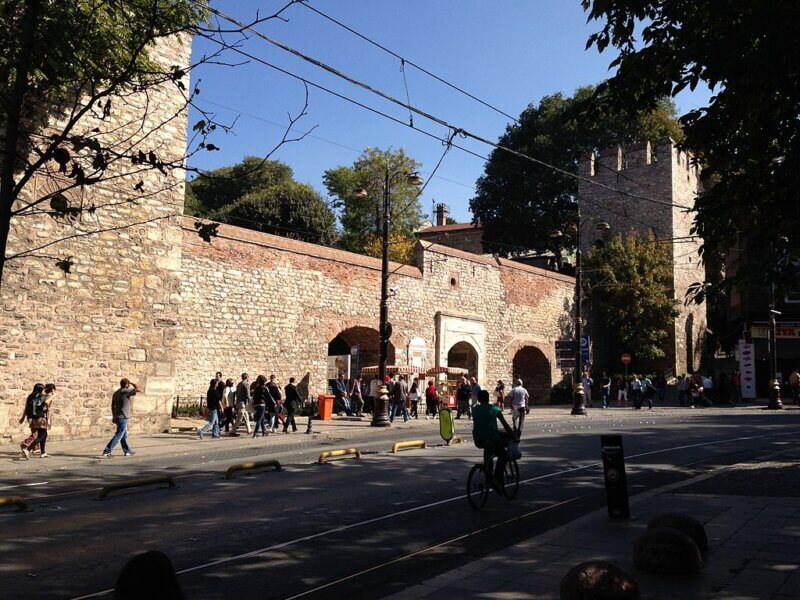Throughout the history of Istanbul, the city has been an attractive place for many cultures. Aside from being a notable trade center, one reason for this was the location of the city. The place where the city is has made it easy to defend against invasions. However, it didn’t mean that people who settled here didn’t have to build defensive structures. On the contrary, there are many forts and walls in the city built against the possibility of an invasion. The Walls of Constantinople are a series of structures that provided a good amount of defense for the city for hundreds of years. In this blog post we are going to learn about the history and importance of these walls. Then we will see how you can visit this place and witness history firsthand.
History Of The Walls Of Constantinople

When Constantine the Great founded the city as the new capital of the Roman Empire, he ordered the building of the walls. Before this, there were fortifications and walls remaining from earlier times. The construction process of this first phase finished during the 4th century. These walls, along with protecting the city from land attacks, also provided defense against invasions from the sea.
Then, another line of walls were built during the 5th century as the city became larger. For hundreds of years the walls had protected the city against attacks until Ottomans took the city. This was largely due to the canons that Ottomans were using, which made defensive walls such as these somewhat obsolete. After this the Walls of Constantinople mostly remained intact until some parts had to be dismantled in the 19th century. Today the walls are a UNESCO World Heritage Site and some renovations are planned.
Significance Of The Walls Of Constantinople

There are many places with historical value in Istanbul regardless of where you go here. This is especially true for Fatih district where the Old City was in. For example important buildings such as Topkapi Palace, Hagia Sophia and the Grand Bazaar are all here. Because here is where Constantinople, the capital city of the Byzantine Empire, was located. For hundreds of years the city remained a hub of trade, culture and political power. The most important reason why the city held on for so long was because they defended it well. As the most crucial line of defense, the Walls of Constantinople were mostly behind this success.
Back when it served a practical purpose, the walls had vital importance. Today they still have importance as well but due to their historical impact. These walls made it possible for such an important city to defend itself. Also, the walls show us how much these people were capable of doing and how skilled they were. These massive walls are surely an example of architectural masterpiece. Therefore, for reasons such as these, these gigantic walls are a significant part of the city.
The Structure Of The Walls

As we have mentioned before, the series of walls that make up the structure are massive. They cover such a large area that the city had managed to hold off intruders for a long time with a relatively small garrison. The walls stretch for about 22 km. (13.6 miles) and they have an elaborate design. For instance, walls that protected the city from land attacks have three sections which improve defense capabilities.
Also the walls had a total of 96 towers that stood 25 m. (82 ft.) tall on average. Aside from towers, there are also many gates throughout the whole structure. Today some of these gates still stand and you can visit them and see their incredible sizes and elaborate designs.
How To Visit The Walls Of Constantinople

The Walls of Constantinople surround the place where many refer to as the “historical peninsula”. As a very large structure stretching over 20 km., you can find and visit the walls very easily. Also, you can visit many of its gates that are still standing such as The Xylokerkos Gate, The Gate of the Spring and the Adrianople Gate.
In order to go to any of these gates you can use many of the transportation methods in Istanbul depending on where you are currently in. The open hours and entrance fees vary for each portion of the walls. Also, there are many guided tours that include this part of the city.
Other Attractions Around The Structure

The Walls of Constantinople stretch over a very wide area and there are many other places to visit around them. Basically the walls are in the Fatih district, which is a place where many other historical structures are in.
The Palace of the Porphyrogenitus, Yedikule Dungeons Museum and Panorama 1453 History Museum are some of the places you might find interesting. Also, in the Fatih district, you can visit places like the Blue Mosque, Hagia Irene and some of the best museums in Istanbul.

